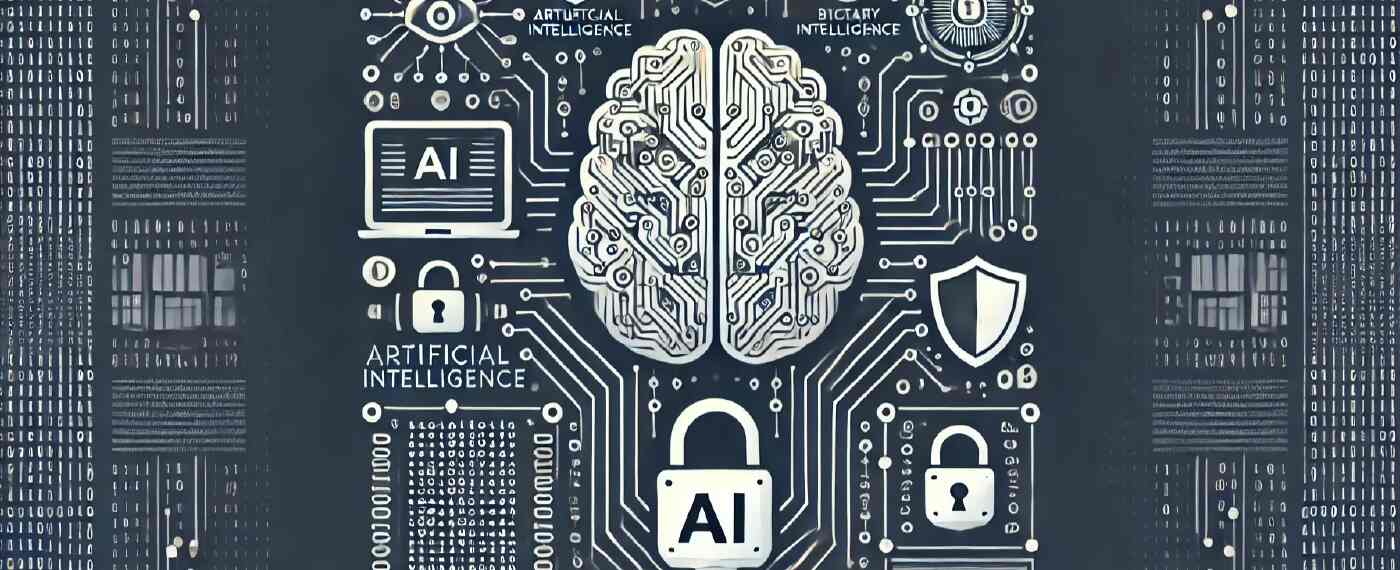AI and Cybersecurity: How Artificial Intelligence Is Revolutionizing It

Table of Contents
In today’s digital age, the landscape of cyber threats is rapidly evolving. The integration of artificial intelligence (AI) into cybersecurity systems marks a significant leap forward in defending against these threats. This article explores the connection between of AI and cybersecurity, showcasing why understanding this intersection is crucial for anyone interested in the future of cyber defense.
The Rising Importance of AI in Cybersecurity
Artificial intelligence (AI) refers to the simulation of human intelligence processes by machines, especially computer systems. These processes include learning (the acquisition of information and rules for using the information), reasoning (using rules to reach approximate or definite conclusions), and self-correction. AI in cybersecurity involves the use of these intelligent processes to enhance the security of systems, networks, and data.
How AI Enhances Cybersecurity Strategies
The integration of AI into cybersecurity strategies offers multiple benefits. AI and machine learning algorithms can analyze vast amounts of data to identify patterns and anomalies, enabling security teams to detect and respond to threats more quickly and accurately. AI’s role in cybersecurity is not just about automation but also about providing deeper insights that security professionals might miss.
Benefits of AI in Cybersecurity: Why It Matters
The benefits of AI in cybersecurity are numerous. One of the most significant advantages is its ability to improve threat detection. AI systems can analyze millions of data points in real-time, identifying unusual patterns that may indicate a cyber threat. This level of analysis is beyond the capability of human security analysts, making AI an indispensable tool in modern cybersecurity practices.
How Does AI Support Security Teams?
AI can also help security teams by automating routine tasks, freeing up security professionals to focus on more complex issues. For example, AI tools can automatically handle the initial analysis of security alerts, determining which ones are false positives and which require further investigation. This automation enhances the overall security posture of an organization, ensuring that security incidents are addressed more efficiently.
Examples of AI Cybersecurity Tools
AI-powered cybersecurity tools are transforming the way organizations protect their systems and data. These tools leverage the power of artificial intelligence to provide advanced threat detection, automated responses, and comprehensive security insights. Here are some concrete examples of AI-powered cybersecurity tools:
Darktrace
- Functionality: Darktrace uses AI to identify and respond to cyber threats in real-time. It creates a dynamic understanding of an organization’s normal operations and detects deviations that may indicate a security threat.
- Benefits: Darktrace’s self-learning AI can detect novel threats that traditional signature-based systems might miss. Its autonomous response capabilities can neutralize threats before they escalate.
CrowdStrike Falcon
- Functionality: CrowdStrike Falcon is an endpoint security platform that uses AI and machine learning to detect and prevent cyber attacks. It continuously monitors endpoints for signs of malicious activity and provides instant visibility into threats.
- Benefits: With its AI-driven analytics, Falcon can identify sophisticated attacks such as zero-day exploits and fileless malware. It also offers rapid incident response and remediation, reducing the time and effort required from security teams.
CylancePROTECT
- Functionality: CylancePROTECT employs AI to predict, prevent, and block malware in real-time. It analyzes the attributes of files to determine whether they are safe or malicious without relying on signatures.
- Benefits: By using AI, CylancePROTECT can stop threats before they execute, significantly reducing the risk of infections. Its lightweight agent has minimal impact on system performance, making it suitable for a wide range of environments.
IBM QRadar
- Functionality: IBM QRadar is a security information and event management (SIEM) system that uses AI to analyze security data and detect anomalies. It correlates events from various sources to identify potential security incidents.
- Benefits: QRadar’s AI-driven analytics provide deep insights into security events, helping security teams prioritize their response efforts. Its ability to integrate with other security tools enhances overall security posture and efficiency.
Vectra AI
- Functionality: Vectra AI specializes in network detection and response (NDR). It uses AI to monitor network traffic for signs of malicious activity and provides actionable insights to security teams.
- Benefits: Vectra AI can detect and respond to threats that bypass traditional defenses, such as insider threats and advanced persistent threats (APTs). Its AI algorithms continuously learn and adapt to new attack patterns, improving detection accuracy over time.
Advantages of AI Cybersecurity
The benefits of AI-powered cybersecurity tools are substantial, providing organizations with enhanced capabilities to protect against evolving cyber threats. Here are some key benefits:
Enhanced Accuracy in Threat Detection
- Benefit: AI-powered tools can analyze vast amounts of data to identify patterns and anomalies that may indicate a threat. This enhances the accuracy of threat detection and reduces the number of false positives, allowing security teams to focus on genuine threats.
- Example: Darktrace’s AI algorithms create a dynamic understanding of normal operations, enabling it to detect subtle deviations that may signal a threat. This level of precision is difficult to achieve with traditional methods.
Reduced Response Times
- Benefit: AI-driven automation can significantly reduce the time it takes to respond to security incidents. Automated responses can contain and neutralize threats in real-time, minimizing potential damage.
- Example: CrowdStrike Falcon’s AI-driven analytics provide instant visibility into threats and automate responses to stop attacks before they spread. This rapid response capability is crucial in preventing data breaches and system compromises.
Ability to Handle Complex Security Challenges
- Benefit: AI-powered tools can address complex security challenges that traditional methods may struggle with. They can analyze and correlate data from multiple sources to provide comprehensive security insights.
- Example: IBM QRadar’s AI-driven analytics can correlate events from various sources, such as network traffic, endpoint data, and log files, to identify complex attack patterns. This holistic approach enhances the overall security posture of an organization.
Scalability and Efficiency
- Benefit: AI-powered tools can scale to handle large volumes of data and security events without compromising performance. This scalability is essential for organizations with extensive IT infrastructures.
- Example: CylancePROTECT’s lightweight agent can operate efficiently across thousands of endpoints, providing predictive security without significant impact on system performance. This scalability ensures consistent protection across the entire organization.
Proactive Threat Mitigation
- Benefit: AI enables proactive threat mitigation by predicting and preventing attacks before they occur. This proactive approach reduces the risk of security incidents and enhances overall resilience.
- Example: Vectra AI’s network detection and response capabilities allow it to detect and respond to threats in real-time, preventing potential breaches and minimizing the impact of attacks.
Continuous Learning and Adaptation
- Benefit: AI algorithms continuously learn from new data and adapt to emerging threats. This continuous improvement ensures that AI-powered tools remain effective against evolving cyber threats.
- Example: Darktrace’s self-learning AI adapts to changes in network behavior, improving its ability to detect novel threats over time. This adaptive capability is crucial in staying ahead of cyber criminals who constantly evolve their tactics.
Challenges and Ethical Considerations in AI and Cybersecurity
The integration of artificial intelligence (AI) into cybersecurity offers immense potential but also brings significant challenges and ethical considerations.
High Costs and Resource Requirements: Developing, deploying, and maintaining AI-powered tools require substantial financial and technical resources, making it difficult for smaller organizations to adopt these advanced solutions.
Data Quality and Availability: AI systems need large volumes of high-quality data to function effectively. Poor-quality or biased data can lead to inaccurate threat detection and numerous false positives, which can undermine the effectiveness of AI tools.
Integration with Existing Systems: The complexity of integrating AI solutions with legacy systems can delay deployment and reduce overall effectiveness, necessitating extensive modifications.
Evolving Threat Landscape: Cyber criminals continuously develop new techniques to bypass AI defenses, requiring AI systems to be constantly updated and monitored to stay effective. This dynamic environment makes it challenging for AI to keep pace with emerging threats.
Skill Gap and Training: Implementing AI in cybersecurity requires specialized skills and knowledge, which are currently in high demand. Organizations often struggle to find and retain the necessary talent to manage and optimize AI systems.
Developing Ethical Guidelines: On the ethical front, it is essential to ensure responsible AI use. Clear ethical standards prevent misuse and ensure that AI respects privacy and human rights.
Addressing Bias in AI Systems: Biased data can lead to unfair or discriminatory outcomes. Ensuring diverse and representative training data helps mitigate this issue.
Ensuring Transparency and Accountability: This is vital for AI decision-making processes. Implementing explainable AI techniques can enhance transparency and build trust.
Balancing AI and Human Oversight: It is necessary to ensure that AI augments rather than replaces human judgment. This balance helps maintain ethical standards and provides a safety net for AI’s automated processes.
AI and Human Intelligence: A Collaborative Approach
AI and human intelligence can work together to create a more effective cybersecurity defense. While AI can collect and analyze data at an unprecedented scale, human security professionals bring critical thinking and contextual understanding to the table. This collaborative approach ensures a more comprehensive and resilient security posture.
The future of AI in cybersecurity will likely see even greater collaboration between AI and human intelligence. As AI technologies continue to evolve, they will complement and enhance the capabilities of security professionals, enabling a more proactive and effective defense against cyber threats.
Conclusion
The integration of artificial intelligence (AI) into cybersecurity marks a transformative shift in how we protect our digital world. From improving threat detection to automating routine tasks, AI offers numerous benefits that can significantly enhance our cybersecurity strategies. However, the successful implementation of AI in cybersecurity also requires addressing challenges and ensuring responsible use.
By embracing a collaborative approach between AI and human intelligence, we can create a more robust and resilient defense against the ever-evolving landscape of cyber threats. As we look to the future, the role of AI in cybersecurity will continue to grow, shaping the way we protect our systems, networks, and data.







